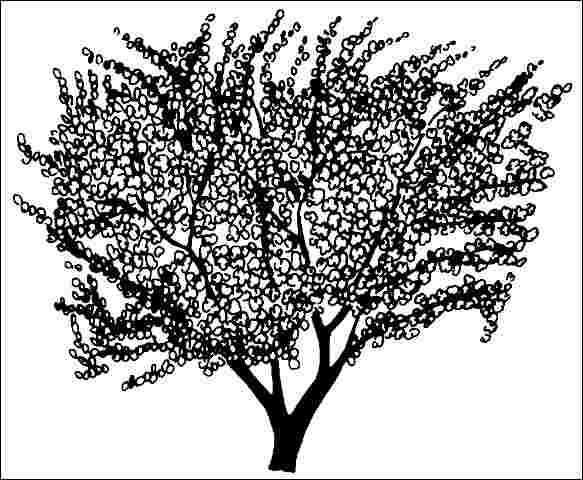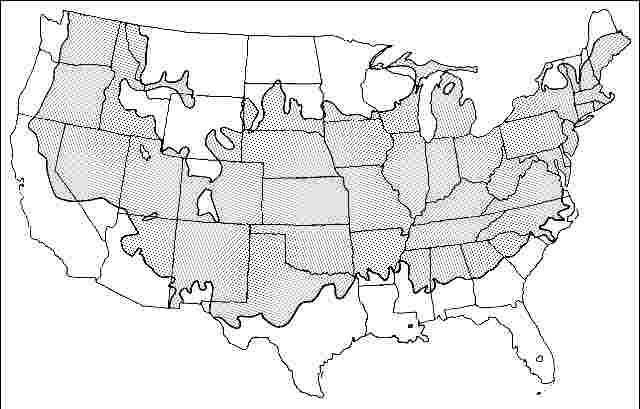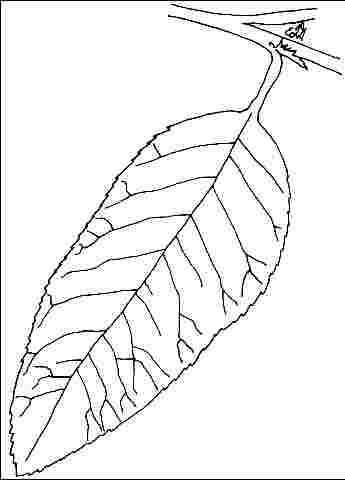Introduction
Growing 15 feet high and wide, Newport Cherry Plum forms a rounded silhouette of dark purple foliage. The new leaves unfold as light bronze-purple but quickly change to red or red-purple. `Newport' Cherry Plum has pale bluish-pink springtime flowers which are followed by one-inch-diameter, dull purple fruits. It is said to be one of the hardiest purple-leaved plums but is also quite common throughout the South.

General Information
Scientific name: Prunus cerasifera
Pronunciation: PROO-nus sair-uh-SIFF-er-uh
Common name(s): Newport Cherry Plum, Newport Purple-Leaf Plum
Family: Rosaceae
USDA hardiness zones: 4B through 7B (Fig. 2)
Origin: not native to North America
Invasive potential: little invasive potential
Uses: specimen; container or planter; Bonsai; shade
Availability: not native to North America

Description
Height: 15 to 18 feet
Spread: 15 to 20 feet
Crown uniformity: symmetrical
Crown shape: round, vase
Crown density: dense
Growth rate: slow
Texture: medium
Foliage
Leaf arrangement: alternate (Fig. 3)
Leaf type: simple
Leaf margin: serrate
Leaf shape: ovate, elliptic (oval), obovate
Leaf venation: pinnate, brachidodrome
Leaf type and persistence: deciduous
Leaf blade length: less than 2 inches, 2 to 4 inches
Leaf color: purple/red
Fall color: purple
Fall characteristic: showy

Flower
Flower color: white/cream/gray, pink
Flower characteristics: showy
Fruit
Fruit shape: round
Fruit length: 1 to 3 inches
Fruit covering: fleshy
Fruit color: purple
Fruit characteristics: attracts birds; not showy; fruit/leaves a litter problem
Trunk and Branches
Trunk/bark/branches: branches don't droop; not showy; typically one trunk; thorns
Pruning requirement: little required
Breakage: resistant
Current year twig color: reddish, brown
Current year twig thickness: thin
Wood specific gravity: unknown
Culture
Light requirement: full sun
Soil tolerances: clay; sand; loam; slightly alkaline; acidic; well-drained
Drought tolerance: moderate
Aerosol salt tolerance: moderate
Other
Roots: not a problem
Winter interest: no
Outstanding tree: no
Ozone sensitivity: unknown
Verticillium wilt susceptibility: susceptible
Pest resistance: sensitive to pests/diseases
Use and Management
Very popular due to the unusual leaf color, many gardeners want one of these things in their yard. But one plant really attracts attention to an area, and it can be overpowering in a small landscape creating a cramped feeling. Due to the strong effect, best used in a large-scale landscape as a single specimen, not in a row or mass planting. It makes a nice, small ornamental near the deck or patio but locate it far enough away so dropping fruit will fall on the lawn or in a groundcover bed. It is often short-lived.
`Newport' Cherry Plum should be grown in full sun on well-drained, acid soil to bring out the richest leaf color. It tolerates slightly alkaline soil. Tolerant of moderate heat and drought, it often succumbs to borers on poor, compacted soil.
Propagation is by cuttings.
Pests
This Cherry Plum is susceptible to aphids, borers, scales, mealy bugs, and tent caterpillars.
Diseases
Canker and leaf spots may infect this tree.